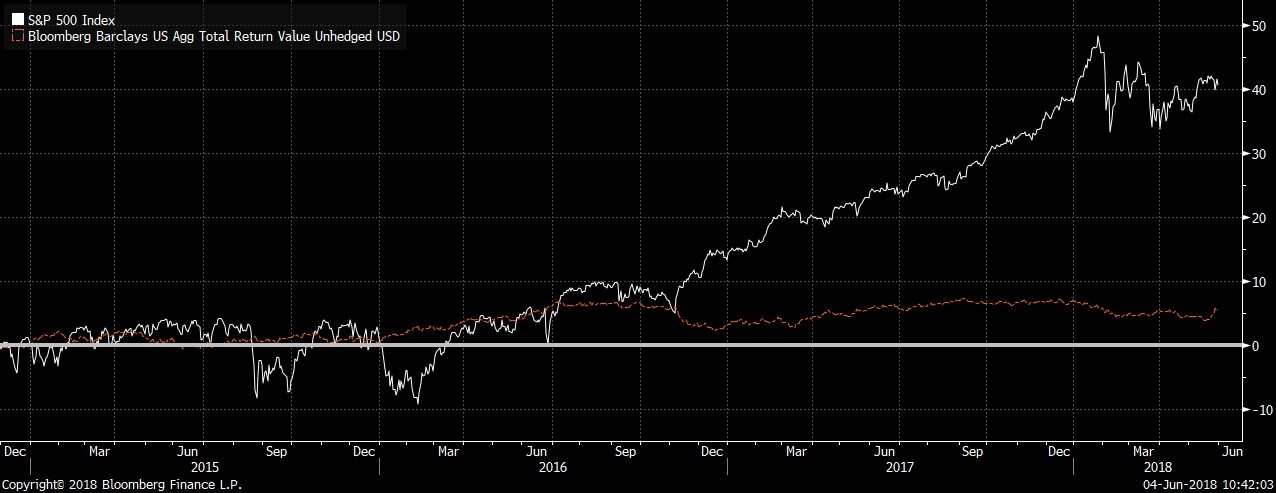By Richard Bernstein, Chief Executive and Chief Investment Officer, Richard Bernstein Advisors
We wrote a white paper in November 2014 titled “Tired of being scared yet?”. We outlined 50 different topics investors consistently cited at the time as to why the stock market was very risky. Investors’ fear over the past several years led to near-historic flows into bond ETFs and bond mutual funds and, until more recently, outflows from equities. However, the S&P 500® returned 10.2% per year versus bonds’ 1.5% from November 2014 to May 2018 (see Chart 1).
Investment decisions should not be based on whether there are reasons to be scared because there are always reasons to be scared. Rather, investors must assess potential returns versus that ever- present fear. Successful financial investment and corporate capital investment has always depended on insightful risk/return analysis.
![]()
CHART 1:
S&P 500® vs. Bloomberg Barclays US Bond Aggregate Nov 30, 2014 – May 31, 2018
Source: Bloomberg Finance L.P. For Index descriptors, see “Index Descriptions” at end of document.
Today, investors seem bombarded with a daily flow of “hair on fire” events. Whether it is trade, international relations, oil, emerging market problems, interest rates, or many other issues, it has become extraordinarily difficult for investors to sift through the incessant noise to uncover true investment information.
Reading Twitter posts and reacting to every news event every day seems to us at RBA to be a sure route to investment
underperformance. We prefer to stay disciplined and dispassionate, and invest based on fundamentals rather than noise.
One antidote for noise
It seems hackneyed to suggest that longer investment time horizons are beneficial to investment returns. However, it is


